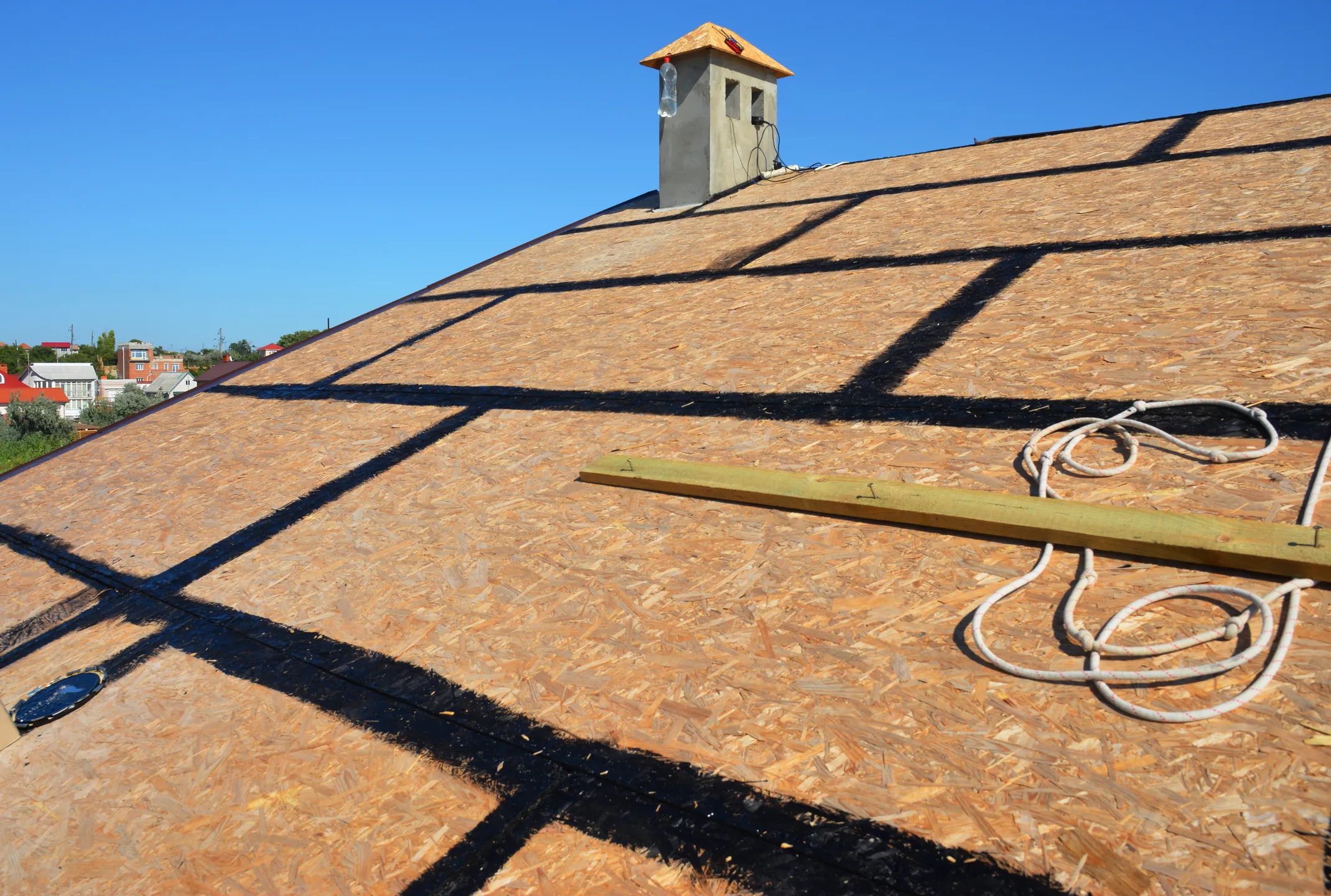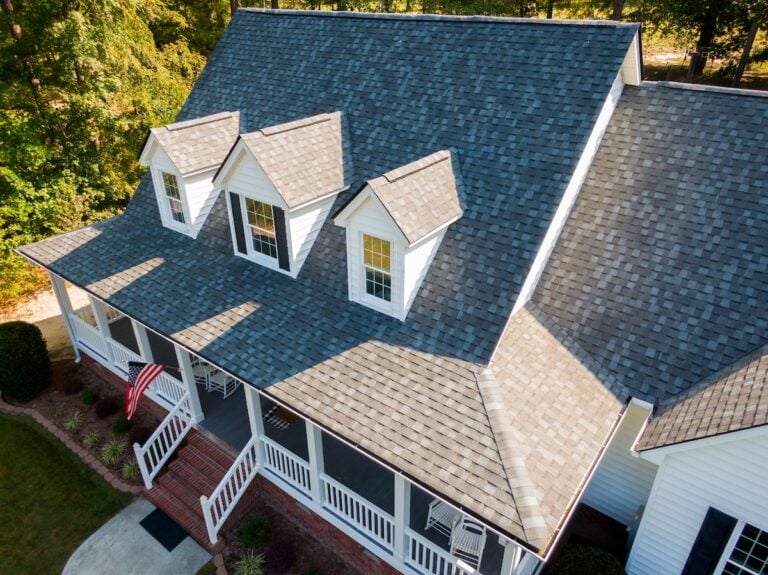When it comes to maintaining a sturdy and long-lasting roof, one of the most critical factors often overlooked by homeowners is the thickness of the roof sheathing. While it may seem like just another technical detail, roof sheathing thickness plays a vital role in the overall integrity and longevity of your home. In this blog post, we will explore why roof sheathing thickness matters, how to choose the right thickness for your home, and what you need to know to ensure your roof is built to withstand the test of time, including:
- The importance of roof sheathing thickness
- Factors influencing the choice of thickness
- Common types of roof sheathing materials
- The impact of climate on roof sheathing
- Installation practices for optimal performance
- 8 signs that your roof sheathing may need an upgrade
- Cost considerations and long-term benefits
- Expert tips for selecting the right roof sheathing thickness
- Frequently asked questions about roof sheathing
- How to maintain your roof sheathing over time
❗️ The Importance of Roof Sheathing Thickness
Supporting the Roof Structure
Roof sheathing, also known as roof decking, serves as the foundation for your roofing materials. It supports the weight of shingles, tiles, or other roofing materials and ensures the structural stability of your roof. The thickness of the sheathing directly impacts its strength and durability.
A thicker sheathing provides better support, reducing the risk of sagging or structural failures over time. This is especially important in regions that experience heavy snowfall or strong winds, where the roof must withstand significant loads.
Enhancing Insulation and Energy Efficiency
Beyond structural support, roof sheathing thickness also plays a role in your home’s insulation and energy efficiency. Thicker sheathing can provide an additional layer of thermal resistance, helping to keep your home warmer in the winter and cooler in the summer.
This added insulation can lead to lower energy bills and a more comfortable living environment. By investing in the right thickness of roof sheathing, homeowners can enjoy long-term savings and a more sustainable home.
Preventing Moisture Damage
Moisture is one of the biggest enemies of any roof. Properly thick roof sheathing can act as a barrier against moisture infiltration, preventing water from seeping into your home and causing damage to the interior structure.
Thicker sheathing is less likely to warp or become compromised by moisture, ensuring that your roof remains intact and free from leaks. This added protection can save homeowners significant repair costs and headaches down the road.
🤔 Factors Influencing Roof Sheathing Thickness
Local Building Codes and Regulations
One of the primary considerations when choosing roof sheathing thickness is local building codes and regulations. These codes are designed to ensure that homes are built safely and can withstand the specific environmental conditions of the area.
Before making any decisions, homeowners should consult their local building authority to determine the minimum required thickness for their region. Adhering to these regulations is crucial for both safety and compliance.
Type of Roofing Material
The type of roofing material you plan to use will also influence the required thickness of your roof sheathing. Different materials have varying weight and support requirements, which must be taken into account to ensure proper performance.
For example, heavier materials like clay tiles or slate may require thicker sheathing to adequately support their weight, while lighter materials like asphalt shingles may not necessitate as much thickness.
Roof Pitch and Design
The pitch and design of your roof can also impact the choice of sheathing thickness. Steeper roofs may require different thicknesses compared to flatter roofs, as the angle affects the distribution of weight and stress.
Additionally, complex roof designs with multiple angles and valleys may benefit from thicker sheathing to provide added strength and stability. Consulting with a roofing professional can help determine the best thickness for your specific roof design.
🪵 Common Types of Roof Sheathing Materials
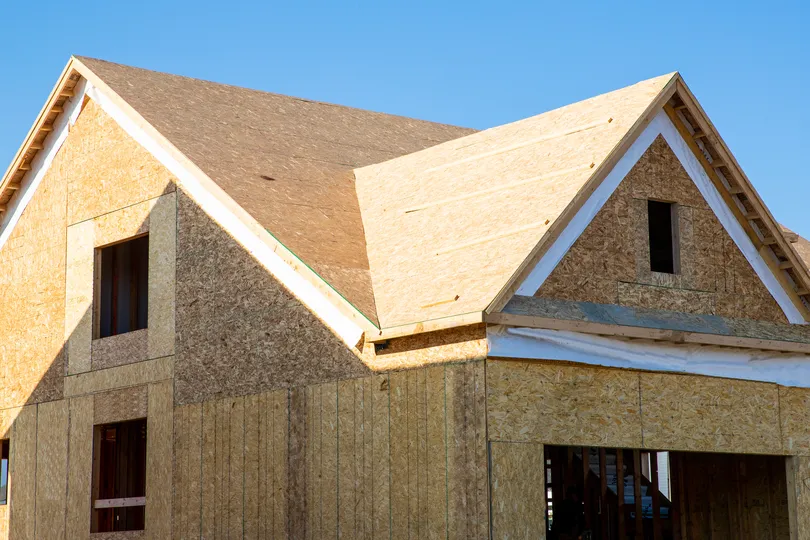
Plywood
Plywood is one of the most common materials used for roof sheathing. It is made by layering thin sheets of wood veneer, which are glued together to form a strong and durable panel. Plywood is available in various thicknesses, making it suitable for different roofing needs.
Oriented Strand Board (OSB)
Oriented Strand Board (OSB) is another popular choice for roof sheathing. It is made from compressed wood strands and resin, resulting in a cost-effective and sturdy material. OSB is often chosen for its affordability and availability in various thicknesses.
Waferboard
Waferboard is similar to OSB but is made from larger wood flakes rather than strands. It offers similar strength and durability and is often used in residential roofing projects. Waferboard is available in different thicknesses to meet various requirements.
❄️ The Impact of Climate on Roof Sheathing
Snow and Ice Loads
In regions that experience heavy snowfall or ice accumulation, the thickness of roof sheathing becomes even more critical. Thicker sheathing provides better support and reduces the risk of structural damage caused by the weight of snow and ice.
Homeowners in such areas should consider opting for thicker sheathing to ensure their roofs can withstand the added load during winter months.
High Wind Areas
For homes located in high wind areas, thicker roof sheathing can provide added protection against wind uplift and damage. Thicker panels are less likely to be lifted or displaced by strong winds, ensuring the integrity of the roof.
Additionally, using thicker sheathing can help secure roofing materials more effectively, reducing the risk of shingles or tiles being blown off during storms.
Humid and Rainy Climates
In humid and rainy climates, moisture resistance is a key consideration. Thicker roof sheathing is less prone to warping or swelling due to moisture exposure, making it a better choice for areas with high humidity or frequent rainfall.
Properly thick sheathing can also help prevent leaks and water damage, ensuring that your roof remains watertight and durable.
🛠️ Installation Practices for Optimal Performance
Proper Fastening Techniques
To ensure the best performance of your roof sheathing, proper fastening techniques are essential. Using the right type and size of nails or screws, and spacing them appropriately, will help secure the sheathing in place and prevent movement over time.
Additionally, staggered seams and adequate overlap between panels can enhance the overall strength and stability of the roof.
Ensuring Adequate Ventilation
Adequate ventilation is crucial for maintaining the integrity of your roof sheathing. Proper ventilation helps prevent moisture buildup and reduces the risk of mold or rot. Installing vents or using breathable underlayment materials can help achieve this.
Regular Inspections and Maintenance
Regular inspections and maintenance are essential for ensuring the longevity of your roof sheathing. Checking for signs of wear, damage, or moisture infiltration can help address issues before they become major problems.
Promptly repairing any damaged or compromised sheathing will help maintain the overall health of your roof and extend its lifespan.
⚠️ 8 Signs That Your Roof Sheathing May Need an Upgrade
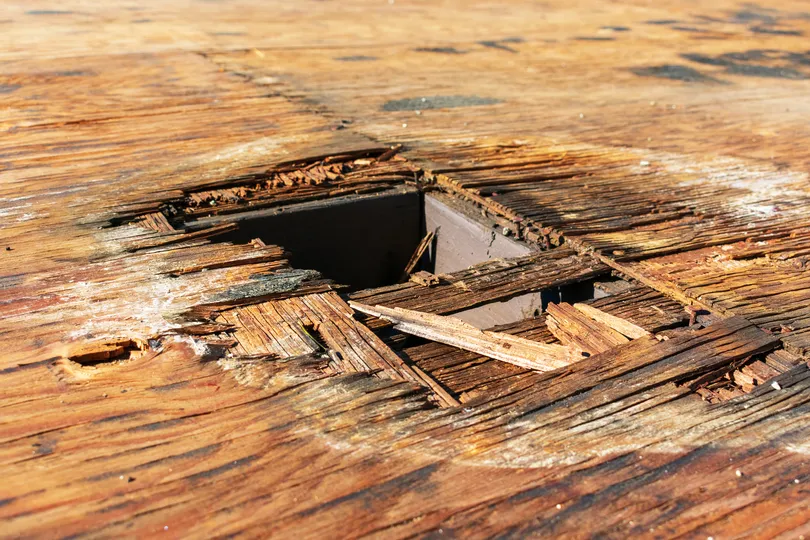
Your roof sheathing plays a crucial role in the overall integrity of your home. Over time, factors such as weather, age, and wear can compromise its effectiveness.
1. Visible Sagging or Warping
Visible sagging or warping of the roof deck is a clear sign that the sheathing may be inadequate or damaged. This issue often results from prolonged exposure to moisture or poor installation. Addressing this promptly not only preserves the roof’s structural integrity but also prevents more extensive repairs down the line.
2. Increased Energy Bills
If you notice a sudden increase in your energy bills, it could be due to inadequate insulation provided by your roof sheathing. Poor insulation allows heated or cooled air to escape, making your HVAC system work harder. Upgrading to thicker sheathing can significantly improve thermal efficiency, keeping your home comfortable and reducing energy costs.
3. Frequent Roof Leaks
Frequent roof leaks are a major indicator that your sheathing may be compromised. Water infiltration can lead to mold growth, rotting wood, and damage to the home’s interior. Upgrading the sheathing not only strengthens the roof but also enhances its waterproofing capabilities, providing better protection against leaks.
4. Signs of Mold or Mildew
If you spot mold or mildew on your roof or in your attic, it could be a sign of moisture retention due to inadequate sheathing. This situation can create an unhealthy living environment, affecting indoor air quality and creating potential health risks. Improving the sheathing can help regulate moisture levels and promote a healthier atmosphere in your home.
5. Cracked or Missing Shingles
If your shingles are cracked, curling, or missing altogether, it might indicate that the underlying sheathing is not providing adequate support. Weak sheathing can lead to shingle failure, which exposes your roof to further damage from the elements. Addressing this issue promptly can prevent costly repairs and extend the life of your roof.
6. Ice Dams in Winter
During winter, if you notice ice dams forming at the edges of your roof, it could suggest poor insulation and sheathing issues. Ice dams block proper drainage, leading to water pooling and potential leaks inside your home. Upgrading your sheathing can improve insulation, preventing heat loss that contributes to ice buildup.
7. Unusual Roof Noises
If you hear creaking or popping noises from your roof, it may be due to movement in the sheathing. These sounds often indicate that the sheathing is not securely fastened or is deteriorating due to age or moisture damage. Investigating these noises can help identify underlying issues before they become critical problems.
8. Age of the Roof
If your roof is approaching the end of its expected lifespan, it’s wise to consider an upgrade to the sheathing as well, even if there are no visible signs of damage. Age can weaken materials, making them more susceptible to failure. Taking preventive measures now can save you from future headaches and ensure your roof remains reliable for years to come.
💵 Cost Considerations and Long-Term Benefits
Initial Investment
While thicker roof sheathing may come with a higher initial cost, the long-term benefits far outweigh the investment. The added strength, durability, and energy efficiency can save homeowners money on repairs and energy bills over time.
Increased Property Value
Homes with properly thick roof sheathing are often seen as more structurally sound and desirable to potential buyers. Upgrading the sheathing can increase the overall value of your property.
Long-Term Peace of Mind
One of the most significant benefits of investing in thicker roof sheathing is the peace of mind it provides. Knowing that your roof is built to withstand various environmental conditions and provide optimal protection for your home is invaluable.
💡 Expert Tips for Selecting the Right Roof Sheathing Thickness
Consult a Roofing Professional
Given the importance of roof sheathing thickness, consulting a roofing professional is highly recommended. They can assess your specific needs, consider local building codes, and provide expert advice on the best thickness for your roof.
Consider Future Plans
When choosing roof sheathing thickness, consider any future plans for your home. If you plan to install solar panels or other heavy equipment on your roof, opting for thicker sheathing can provide the necessary support.
Balance Cost and Quality
While cost is an important factor, it’s essential to balance it with quality. Investing in high-quality, thicker sheathing can provide better long-term benefits and reduce the need for frequent repairs or replacements.
❓ FAQs
Q: What is the standard thickness for roof sheathing?
The standard thickness for roof sheathing typically ranges from 7/16 inch to 3/4 inch. However, local building codes and specific roofing requirements may dictate the appropriate thickness for your home.
Q: Can I use different thicknesses of sheathing on the same roof?
While it is possible to use different thicknesses of sheathing on the same roof, it is generally not recommended. Consistency in thickness ensures uniform support and stability across the entire roof.
Q: How do I know if my roof sheathing needs to be replaced?
Signs that your roof sheathing may need to be replaced include visible sagging, warping, frequent leaks, and increased energy bills. Consulting a roofing professional can help assess the condition of your sheathing and determine if replacement is necessary.
👇 How to Maintain Your Roof Sheathing Over Time
Perform Regular Inspections
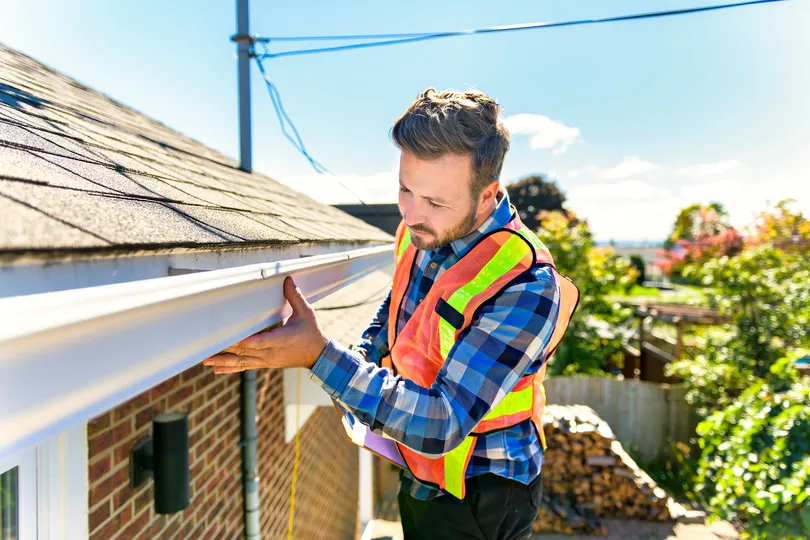
Regularly inspecting your roof sheathing for signs of wear, damage, or moisture infiltration is crucial for maintaining its integrity. Addressing issues promptly can prevent further damage and extend the lifespan of your roof.
Keep Gutters Clean and Functional
Ensuring that your gutters are clean and functional is essential for preventing water buildup and potential damage to your roof sheathing. Regularly cleaning and maintaining your gutters can help protect your roof.
Schedule Professional Maintenance
Scheduling professional maintenance with a roofing expert can help identify and address any issues with your roof sheathing. Regular maintenance ensures that your roof remains in optimal condition and provides the necessary protection for your home.
🙌 Choosing the Right Roof Sheathing with Best Exteriors
Choosing the right roof sheathing thickness is a critical decision for homeowners. It impacts the structural integrity, insulation, and moisture resistance of your roof. By understanding the importance of sheathing thickness, considering various factors, and following expert advice, you can ensure that your roof is built to last.
At Best Exteriors, we pride ourselves on providing top-quality roofing solutions that meet the unique needs of our customers. With years of experience and a commitment to excellence, our team is here to help you make informed decisions about your home exterior needs. Contact us today to learn more about our services and how we can assist you in achieving a durable and reliable roof.
